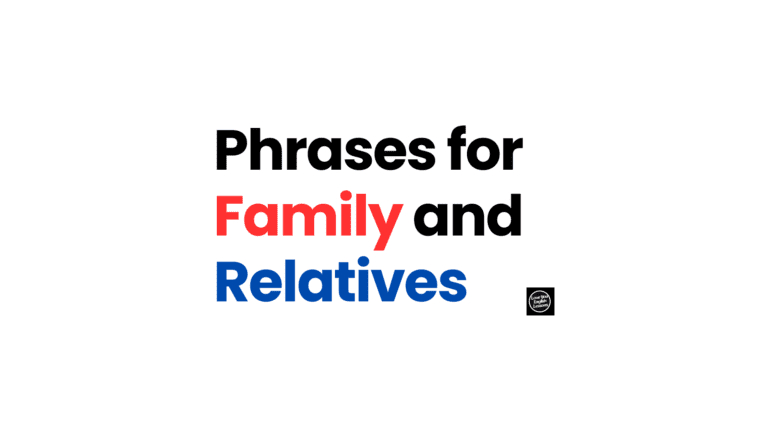What is an Idiom? Definition and Examples
What is an Idiom? Definition and Examples
If you’ve ever heard someone say, “It’s raining cats and dogs,” or “She’s pulling my leg,” you’ve come across idioms!
Idioms are a type of expression that are used frequently in English, and they can be confusing if you don’t know what they mean.
In this post, I’ll explain what an idiom is, how they work, and share some examples to help you understand them better.
What Is an Idiom?
An idiom is a phrase or expression where the meaning is different from the literal meaning of the words.
In simple terms, idioms do not make sense if you try to understand them word by word.
Instead, they have a special meaning that people understand when they hear the phrase.
For example, if someone says, “I’m feeling under the weather,” they don’t mean that they are literally standing below the weather.
Instead, they mean that they are feeling sick or unwell.
The words “under the weather” don’t make sense on their own, but when used as an idiom, they have a clear meaning.
How Do Idioms Work?
Idioms are often used in everyday speech, and understanding them is an important part of speaking and understanding English.
When you use an idiom correctly, it makes your language sound more natural, and it helps you connect with native speakers.
However, idioms can be tricky because their meaning is not always obvious from the words they contain.
If you try to translate idioms word by word into your own language, you might get confused because their meaning is completely different.
For example, the idiom “break the ice” doesn’t mean to literally break ice.
Instead, it means to start a conversation or make people feel more comfortable, especially when meeting for the first time.
Why Do We Use Idioms?
There are several reasons why idioms are so common in English:
To Express Emotions More Colorfully: Idioms can help people express feelings or emotions in a more interesting or vivid way.
Instead of simply saying “I’m angry,” someone might say, “I’m seeing red.” This gives a stronger and more creative feeling.
To Make Conversations Easier: Idioms can make conversations flow more smoothly. They can help people share complex ideas in a simple and short way.
For example, instead of saying, “I don’t want to talk about that topic right now,” someone might say, “Let’s drop the subject.”
To Sound More Natural: Native speakers of English use idioms all the time, and knowing these expressions helps you sound more like a natural speaker.
It makes your speech sound relaxed and familiar.
To Show Cultural Knowledge: Idioms often reflect cultural traditions, history, or shared experiences.
Using idioms can show that you are familiar with the culture of the language you’re speaking.
Common Types of Idioms
Idioms come in many different types, and each one can be used in different situations.
Here are a few common types of idioms:
Animal Idioms: These idioms use animals to express a point. They are often fun and easy to remember. Some examples include:
Weather Idioms: Weather-related idioms are also common in English. These idioms often refer to something unpredictable or out of control.
-
- Under the weather: Feeling sick or unwell.
Example: “I can’t come to work today because I’m feeling under the weather.” - Every cloud has a silver lining: There is something good in every bad situation.
Example: “Although she lost her job, every cloud has a silver lining, as she now has more time for her family.”
- Under the weather: Feeling sick or unwell.
Body Part Idioms: Some idioms refer to parts of the body to explain feelings or actions.
Food Idioms: Food-related idioms are often used to describe situations or behaviors in a creative way.
-
- Take it with a grain of salt: To not take something too seriously or to doubt its truth.
Example: “He said he could run a marathon in an hour, but I took it with a grain of salt.” - Bite off more than you can chew: To take on a task that is too difficult or too much to handle.
Example: “She bit off more than she could chew by agreeing to work on three big projects at once.”
- Take it with a grain of salt: To not take something too seriously or to doubt its truth.
Color Idioms: Idioms that involve colors can describe emotions or situations.
Examples of Idioms in Sentences
Let’s look at some more examples of idioms used in sentences:
“Burn the midnight oil”: To stay up late working on something.
Example: “She had to burn the midnight oil to finish her project on time.”
“A piece of cake”: Something very easy to do.
Example: “The test was a piece of cake. I finished it in 10 minutes.”
“Hit the nail on the head”: To say or do something exactly right.
Example: “You hit the nail on the head with your answer; that’s exactly what we needed.”
“A blessing in disguise”: Something good that seemed bad at first.
Example: “Losing my job was a blessing in disguise because I found a better one shortly after.”
“Cost an arm and a leg”: To be very expensive.
Example: “That new phone costs an arm and a leg, so I’ll wait for a sale.”
How to Learn and Use Idioms
Learning idioms can be fun, but it takes practice.
Here are some tips to help you learn and use idioms more effectively:
Read and Listen to Native Speakers: One of the best ways to learn idioms is to read books, watch TV shows, and listen to movies in English.
Pay attention to how idioms are used in different contexts.
Use Idioms in Your Conversations: Try to use idioms in your own speech. Start by using a few common idioms until you feel comfortable with them.
Over time, you’ll naturally pick up more.
Learn Idioms in Context: Instead of memorizing a list of idioms, learn them by seeing how they are used in sentences.
This will help you understand when to use each one correctly.
Ask for Clarification: If you don’t understand an idiom someone uses, don’t be afraid to ask them what it means.
Native speakers are often happy to explain idioms to non-native learners.
Practice, Practice, Practice: The more you practice using idioms, the easier they will become.
Try to use them when writing or speaking with friends.
Final Thoughts
Idioms are an important and fun part of the English language.
They can make your speech more colorful and help you understand native speakers better.
Although they can be tricky at first, with time and practice, you’ll start to use idioms naturally in your conversations.
Remember to learn idioms in context, and don’t be afraid to ask for help if you’re unsure about their meaning.
The more you practice, the more confident you’ll become in using them!







